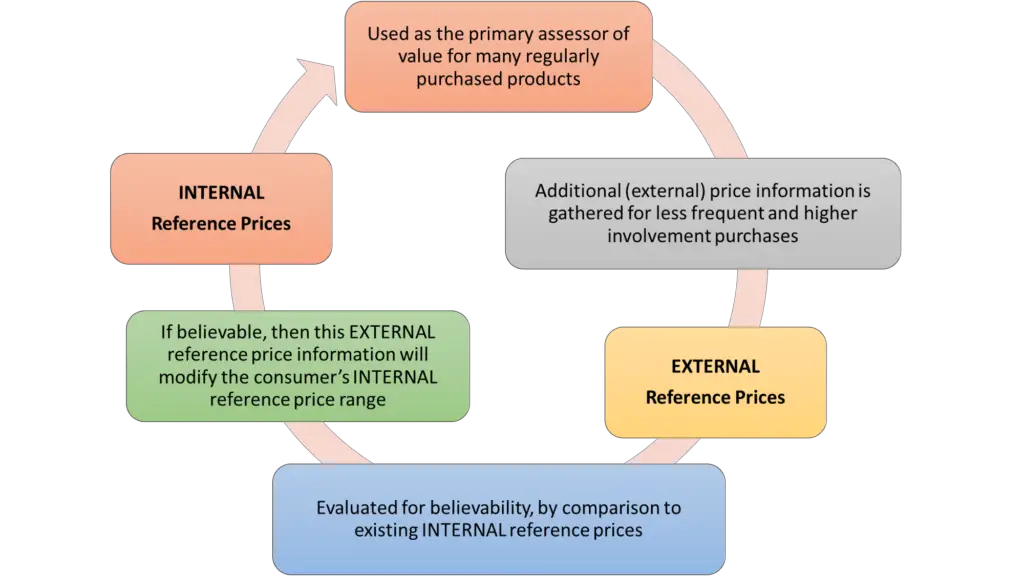Understanding the Interaction between Internal and External Reference Prices
A reference price can be defined as any price in relation to which other prices are evaluated. In other words, the consumer refers to existing knowledge, or information, or a combination of both to assess the price of a product and whether that offers the consumer good value.
Reference prices can be internal or external. Internal reference prices exist in the memory of the consumer, primarily based upon their market experience, previous shopping behavior, as well as exposure to price through advertising and other media.
External reference prices are obtained through in-store price signage, competitive pricing, shopping around and examining prices, online comparison sites, and general advertising.
External reference prices are used when the consumer has limited understanding or confidence in their price points that are held in their memory. This is more likely to occur when the consumer is a less frequent purchaser of the product category, or when the purchase is a high involvement purchase decision, which is important to the consumer to get right.
The overlap between internal and external reference prices
While we have explained internal and external reference prices independently above, the reality is that they are significantly connected.
Over time, internal reference prices are formed by the accumulated knowledge of the consumer through shopping around and purchasing, as well as the observation of advertised prices. While this is unlikely to be “research” by the consumer, it simply happens with experience.
For example, you would have a general understanding of what price is acceptable for many products, especially those that you buy on a regular basis.
Therefore, internal reference prices are formed through continual exposure to external reference prices. Consumers see the price in the store, on point-of-sale signage, in advertising, and perhaps even on social media and discussing prices with family or friends.
This means that the starting point of internal reference prices, and its potential manipulation and change over time, is primarily driven by external reference prices, including from your own brand and competitors.
Likewise, the reverse applies, as external reference price ranges and their believability are assessed and evaluated by the consumer’s internal reference price knowledge. As we can see, this creates somewhat of a circular reference, where the internal and external reference prices work together.
In terms of evaluating an external reference price, such as a discount offer sign in a store, the consumer will assess the price point against the general understanding of prices for that product category (that is, their internal reference prices) even for those categories that they rarely buy.
Let’s Use an Example
For example, they may see an offer on a new smart phone which reads “on sale” only $2,000. Although a consumer may only buy a new smart phone every few years or so, they would have a general understanding of what the price point for phones would be.
If the consumer has an internal reference price range for smart phones in the order of $500-$1,500, then they would reject the external reference price information as being implausible or unbelievable.
However, if the consumer’s internal reference price range was $1,000 to $1,800, then they may adjust their internal reference price range to extend out to $2,000 – as this external price information may modify their internal reference price range.
As you can see below, the difference between the information being accepted or rejected gets down to believability, consistency with existing price understanding, and would be modified by the product brand and the store retailer, as well as individual product attributes.
Related Articles
- Why are Reference Prices Important?
- Internal versus External Reference Prices
- The Two Types of Reference Prices
- A Model of Reference Prices
- What are Reference Prices in Marketing?
Academic Reading

